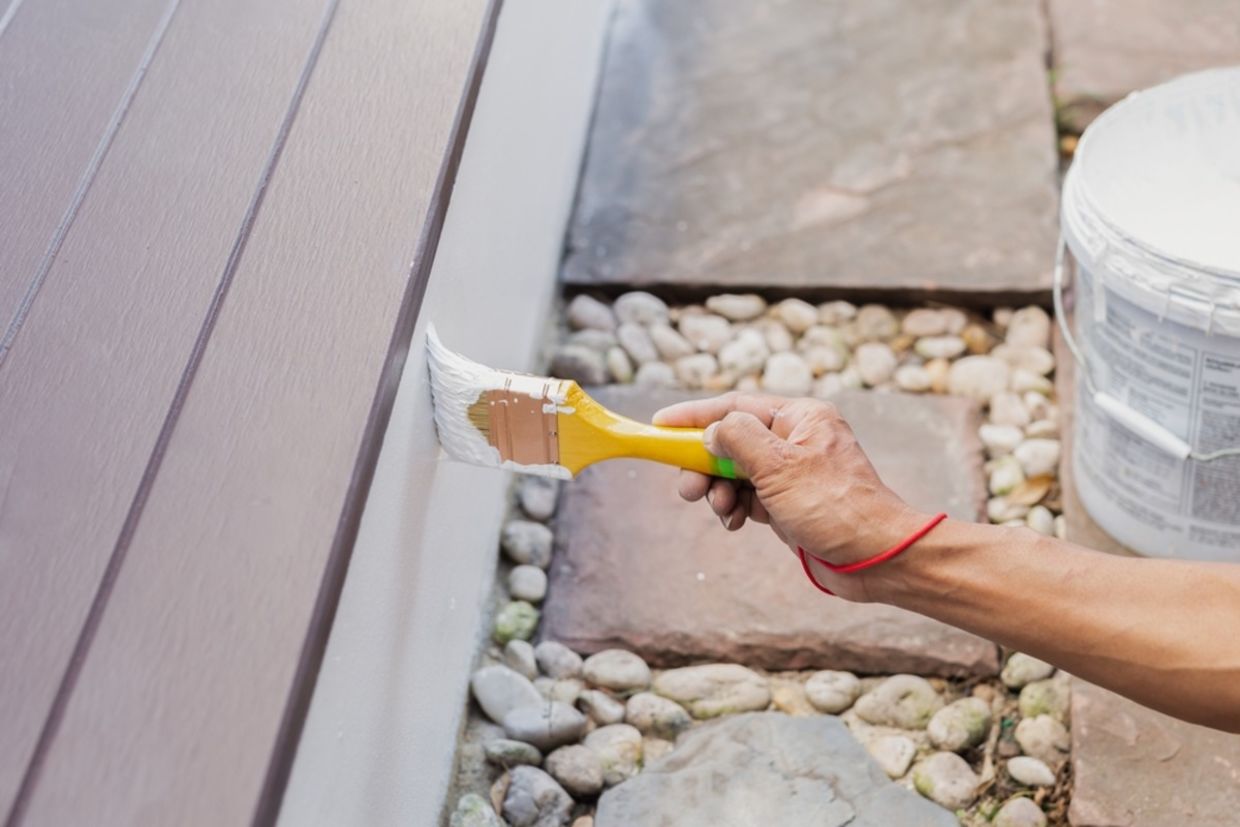
(Bignai / Shutterstock.com)
Stepping into a cool building on a hot summer day is always a pleasant relief. The drop in temperature can feel refreshing, making it the perfect way to cool off after spending a lot of time outside.
Now, a unique type of paint has been developed. It combines the powers of sun reflection and water evaporation and could help keep structures cool even in humid environments, according to a study in Science.
Passive Cooling
The paint “sweats” in order to help keep buildings cool, with the material’s porous structure holding water and slowly releasing it, Science News reports.
It uses passive cooling to keep buildings from heating up. The mechanism cools structures without energy input or mechanical systems. It’s not a new concept. Paints that use passive cooling already exist. However, these paints predominantly use radiative cooling, in which materials in the paint reflect sunlight and other types of radiating heat back into the atmosphere.
The problem with these types of paints is that they are less effective in humid climates, such as Singapore, because the water vapor traps the heat near the surface and doesn’t allow it to be released back into the atmosphere.
In order to overcome these issues, according to Popular Science, the scientists used cement, which can hold a lot of liquid, and calcium silicate, to which they added porosity. The result was a paint called CCP-30 that can reflect 92 percent of sunlight, 95 percent of infrared radiation, and retains about 30 percent of its weight in rainwater. It then turns into vapor, and provides even more passive cooling. Their tests showed that structures painted in CCP-30 saw a 30 to 40 percent decrease in electricity use.
Cooling Urban Heat Islands
As Science News points out, in general, about 60 percent of building energy is used to cool spaces. When this cooling is achieved via air conditioning, the systems not only use a huge amount of electricity, but also release warm air into the local atmosphere, resulting in what is referred to as an urban heat island — a phenomenon in which urban areas are hotter than their surrounding rural counterparts.
A paint like CCP-30, though, could greatly reduce the use of air conditioning as well as the heat in urban heat islands by doing away with the warm air released.
It is tempting to look for efficient one-size-fits-all solutions to the problem of global warming. However, the world is complex, and a solution for one climate is not necessarily the right solution for another. Paints that use only radiative cooling are great for areas that are hot and arid, while paints like CCP-30, which sweat as well as radiate heat, work better for areas that are hot and humid. That is why it is so important to have people from all around the world working towards region-specific solutions to this universal problem for a healthier planet.
YOU MIGHT ALSO LIKE:
This Cool Air Conditioning System is Making its Way to Cities Worldwide
Cooling Playgrounds by Ripping Up Asphalt!
Meet New York City’s First All-Electric Skyscraper







